It is well that there are palaces of peace
And discipline and dreaming and desire,
Lest we forget our heritage and cease
The Spirit’s work — to hunger and aspire:
Lest we forget that we were born divine,
Now tangled in red battle’s animal net,
Murder the work and lust the anodyne,
Pains of the beast 'gainst bestial solace set.
But this shall never be: to us remains
One city that has nothing of the beast,
That was not built for gross, material gains,
Sharp, wolfish power or empire’s glutted feast.
We are not wholly brute. To us remains
A clean, sweet city lulled by ancient streams,
A place of visions and of loosening chains,
A refuge of the elect, a tower of dreams.
She was not builded out of common stone
But out of all men’s yearning and all prayer
That she might live, eternally our own,
The Spirit’s stronghold — barred against despair.
C. S. Lewis' poem Oxford
published in 'Spirits in Bondage'
in 1919 under the pseudonym, Clive Davis [via]
'Oxonia Illustrata' consists of about 40+ engraved plates of Oxford University colleges, buildings, grounds and maps, as produced by the artist David Loggan in 1675. A sampling from two different editions are shown below.
The lighter, double-page images below were spliced - and 'massaged' - together from separate individual page files with differing magnifications, so apologies for any apparent anomalies in appearance. The brown or slightly darker illustrations were made available for download from another host (Folger) as full, decent-sized images, but can be seen at very high resolution on their site.

Interior of the Divinity School
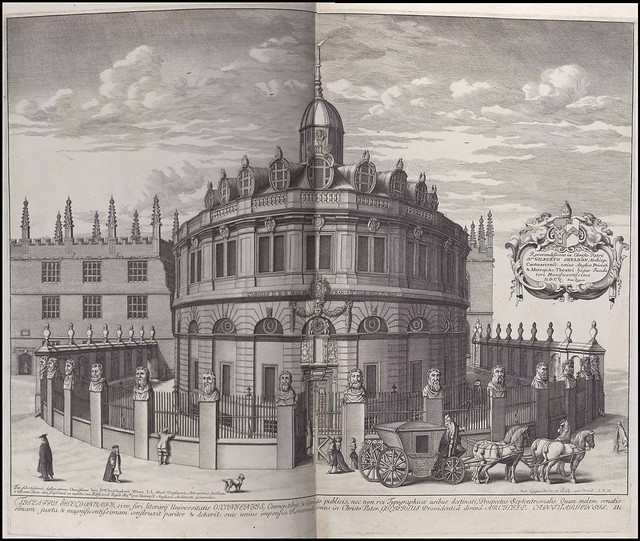
The Sheldonian Theatre
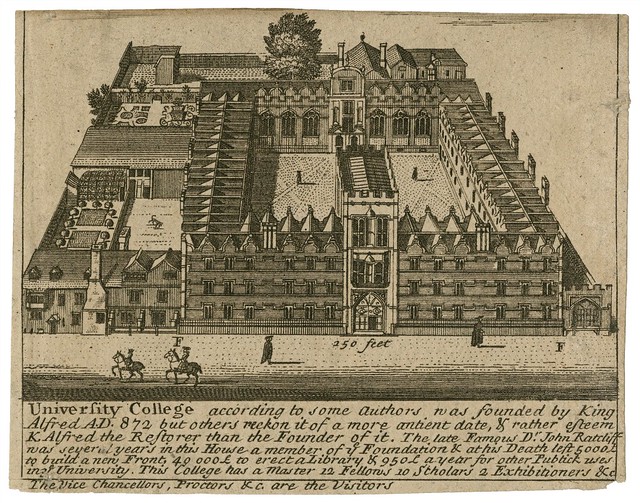
University College [via]
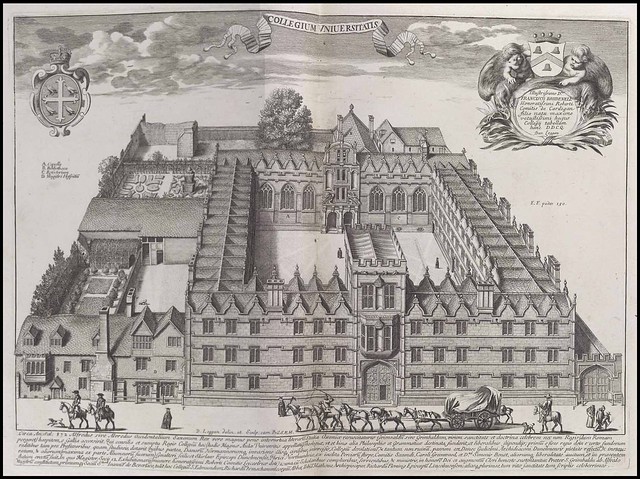
University College

The Conservatory for Evergreens [via]
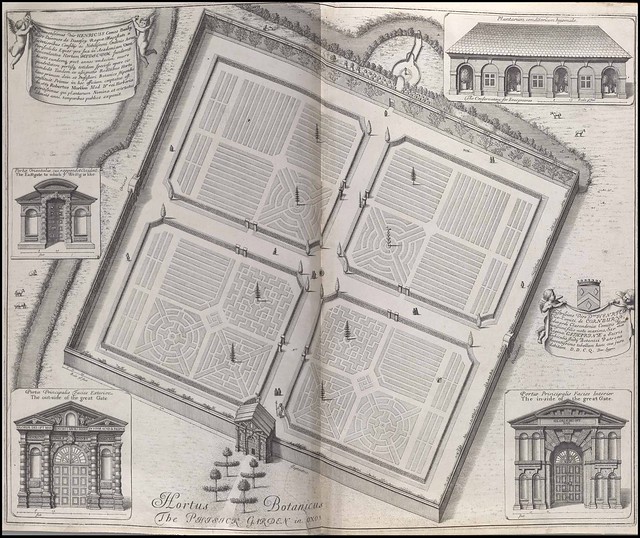
Hortus Botanicus

Prospectus Oxoniae Meridionalis
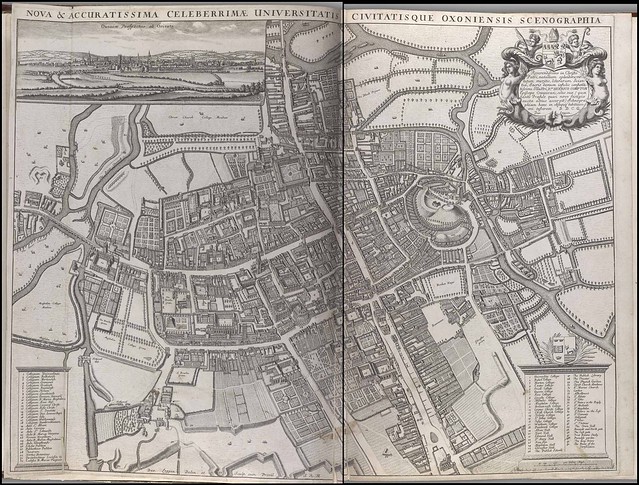
Map of Oxford University & environs
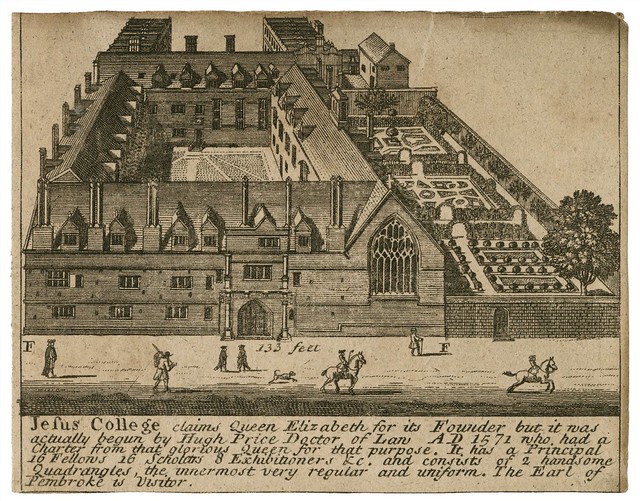
Jesus College [via]
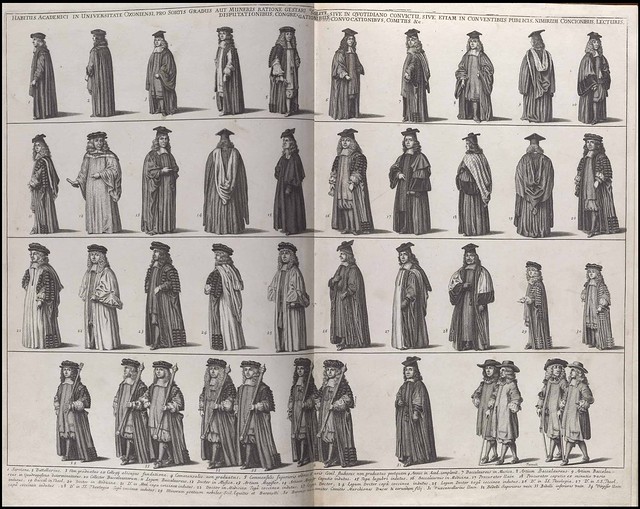
Academic garments
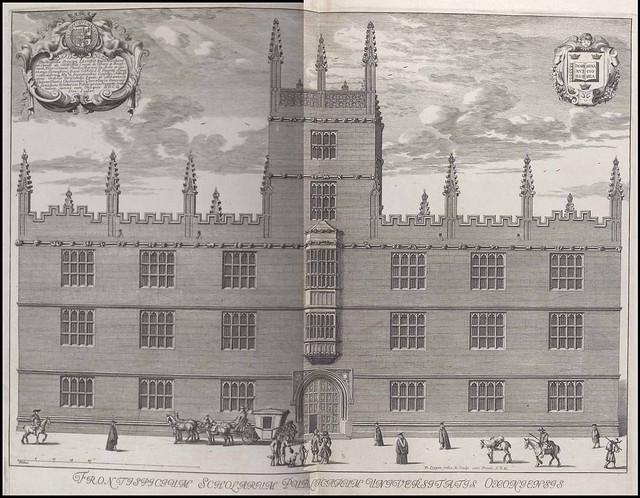
Frontispiece - Bodleian Library
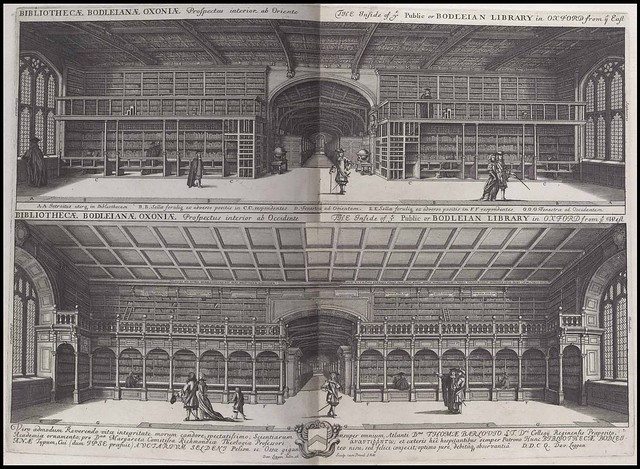
Bodleian Library - interior scenes
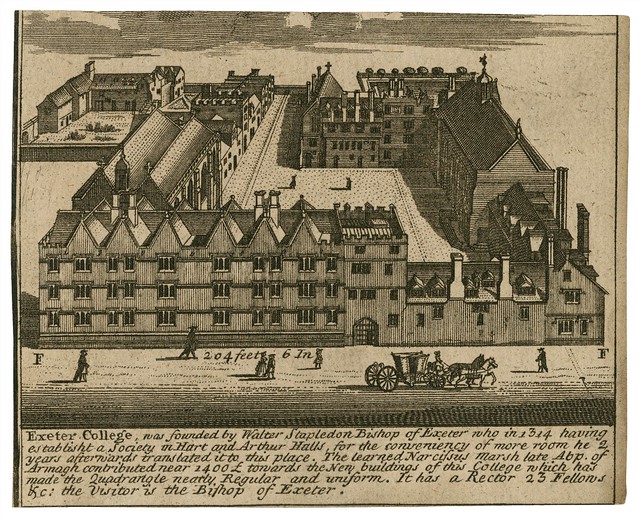
Exeter College [via]
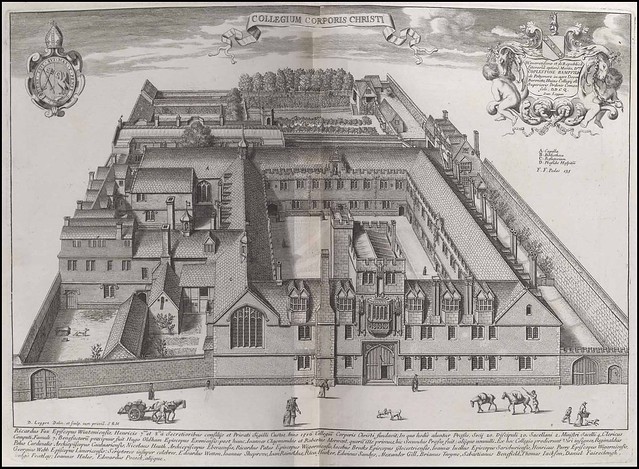
Corpus Christi College
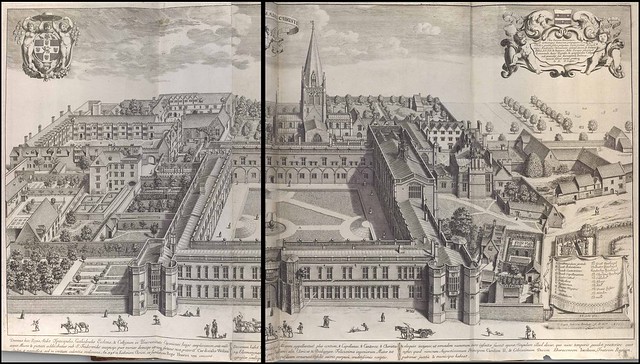
Christ Church
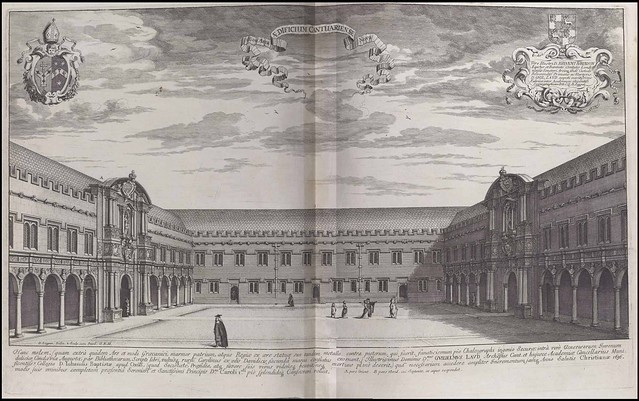
Canterbury Quadrangle, St John's College
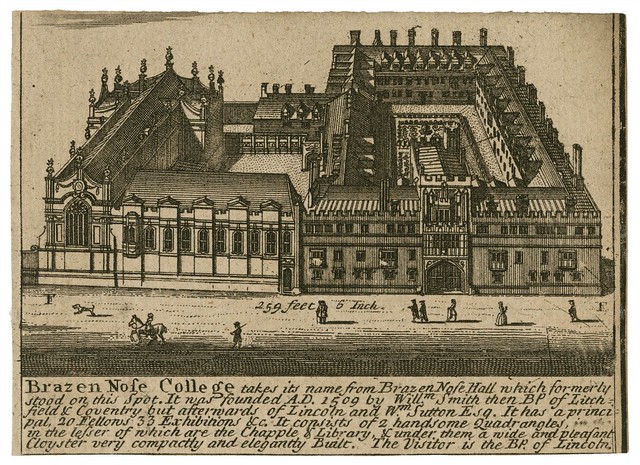
Brasenose College [via]
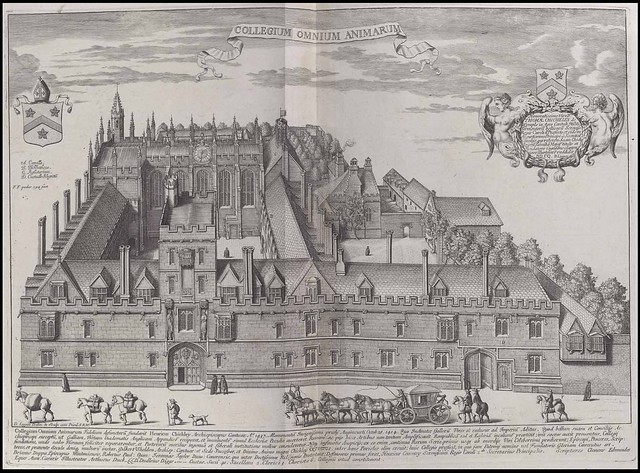
All Souls College
David Loggan (1634-1692) was of Anglo-Scottish heritage but spent the first two of decades of his life in Danzig (Gdansk), Poland. He was fortunate enough to receive artistic training from a couple of leading lights of the print-art world in Willem Hondius^ in Danzig and later, in Amsterdam, from Crispijn van de Passe^.
Loggan emigrated to England in about 1657 and settled in London. His speciality was engraving, but he originally made a name for himself because of a pencil sketch he produced of the Lord Protector, Oliver Cromwell, just before Cromwell's death. Loggan gained further notoriety doing portraits of figures from the nobility (including King Charles II) as miniature graphite drawings on vellum, a style of the time known as plumbago^. Chief among Loggan's other works from this period are an illustration plate of St Paul's Cathedral (1658), the engraved title page for 'The Book of Common Prayer'^(1662) and plates for William Dugale's 'Origines Judiciales' (1666).
In 1665, Loggan left London because of the plague and settled in Oxfordshire, from where his wife's family originated. In the following years, Loggan became acquainted with (and sketched portraits of) Oxford University elites, including Elias Ashmole, founder of Oxford University's Ashmolean Museum, and John Fell, Dean of Christ Church and one of the founders of Oxford University Press. At one point, Loggan is also known to have sold a printing press to the university.
It was probably John Fell's influence that saw Loggan appointed Engraver to the University in 1669, and his first task was to prepare a couple of illustration plates of the newly built Sheldonian Theatre, where the university press was (first) housed. Loggan and his assistants are thought to have produced title pages and plates for some of the books coming out of the Oxford University Press during his tenure, and a 1674 book on academic robes is also attributed to Loggan and his team.
A commission was received by Loggan to prepare bird's-eye view engravings of Oxford University's colleges, halls and buildings, together with prospect maps. His renowned 'Oxonia Illustrata' (1675) was intended to accompany Anthony Wood's 'The History and Antiquities of the University of Oxford' (1674). In the late 1600s, distinguished visitors to Oxford University were presented with copies of both books.
"Influenced by the work of Wenceslas Hollar, Loggan's meticulously detailed views were the first accurate representation of all the buildings and gardens of the university, and they have been an invaluable quarry for historians, antiquaries, and topographers ever since."(1)Loggan returned to London, after 'Oxonia Illustrata' was released, and let rooms to wealthy patrons. He also produced views of Cambridge University colleges, buildings and grounds and the resulting publication, 'Cantabrigia Illustrata', was published in 1690. Later, as his portrait-sketching business was in decline, Loggan tried to take up the new fashion of mezzotint engraving, but apparently he suffered from an eyesight problem and he ultimately died in debt, and with few possessions, in 1692.
- 'Oxonia Illustrata' is available online at: [1] Rare Book Room, in full and in Latin from the 1675 original (I think), at modest resolution; and at [2] Folger Shakespeare Library, in part and in English, copied [~1700?] as smaller illustrations from Loggan's originals and which are available in a very high resolution viewing format.
- The biographical summary above relies very heavily on the Oxford Dictionary of National Biography entry(1) for David Loggan, written by Geoffry Tyack^ of Oxford's Kellogg College [via].
- The National Portrait Gallery entry for David Loggan includes a small biography and a number of his portraits.
- Sanders of Oxford has over 100 illustrations of or by David Loggan.
- Virtual Tour of Oxford.
- An April 2014 OUP blog post: *New perspectives on the history of publishing* features a 30min podcast interview with book historian, Ian Gadd, about the history of the Oxford University Press.
- 'The History of Oxford University Press: Three-volume set' Edited by Ian Gadd, Simon Elliot and W Roger Louis, 2014.
- David Loggan at Wikipedia.
- Sotheby's / Christie's / Heatons.
- Thanks to Karla, John & Sarah.
- This is a placeholder for a future link to a full digital copy of 'Oxonia Illustrata' that I hope appears one day online at the Oxford Digital Library site, where it belongs.
- This post first appeared on the BibliOdyssey website.


No comments :
Post a Comment
Comments are all moderated so don't waste your time spamming: they will never show up.
If you include ANY links that aren't pertinent to the blog post or discussion they will be deleted and a rash will break out in your underwear.
Also: please play the ball and not the person.
Note: only a member of this blog may post a comment.